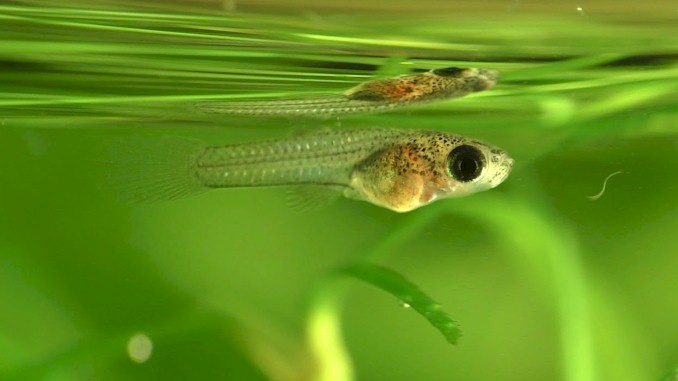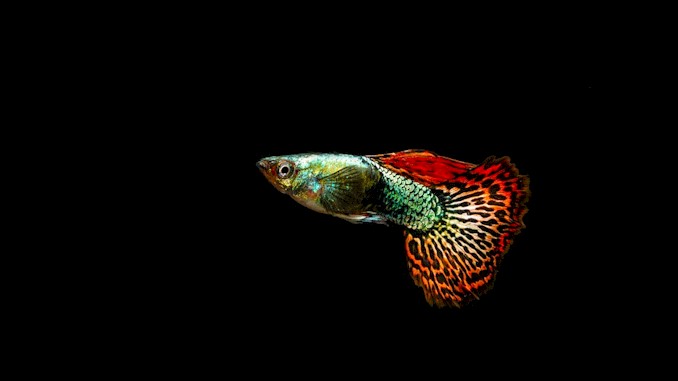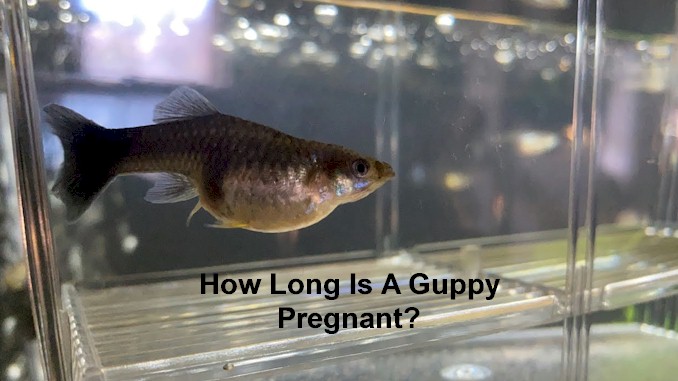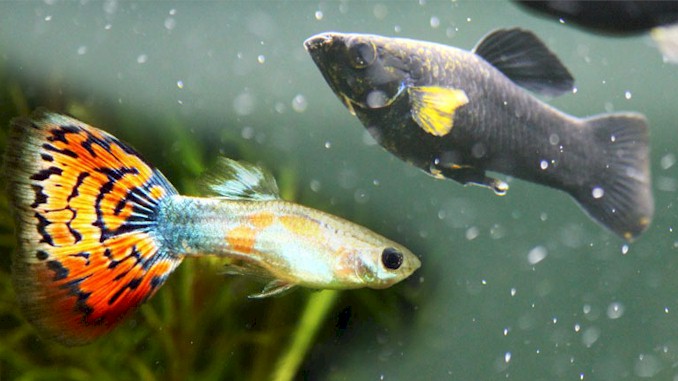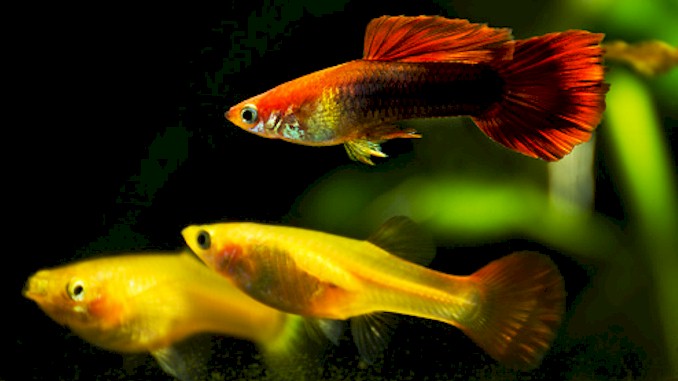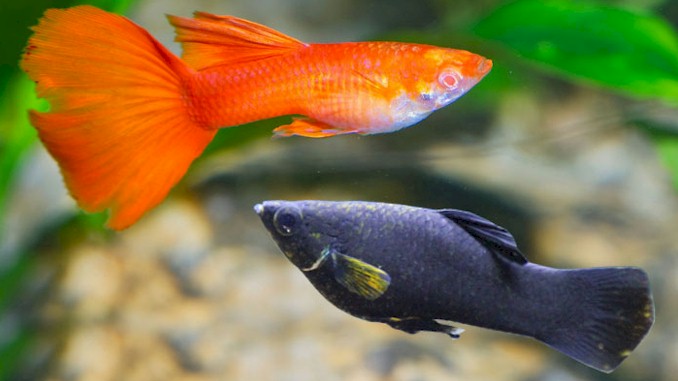Guppy Fry Care: Breeding, Setup, Feeding, Protection
Whether you’re a novice guppy keeper or a seasoned hobbyist, you must come to the point where you want a handbook with a comprehensive guide on guppy fry care by your side. As a seasoned enthusiast of guppy, that is exactly what I want to share with you—the invaluable insights to ensure the successful breeding, setup, feeding, and protection of these delicate aquatic wonders. So you can embark on this exciting journey knowing that you have found the ultimate resource to unlock the secrets of guppy fry care. Let’s dive in and discover the keys to their well-being together.
In a typical batch, guppy fish are known to give birth to a substantial number of fry. On average, a single female guppy can produce anywhere from 20 to 100 fry in one birthing event. However, it is important to note that this number may vary based on factors such as the age, health, and genetic traits of the parent guppies. By implementing the proper breeding techniques and creating an ideal tank setup, you can maximize the survival rate of guppy fry and witness the marvel of their flourishing population.
But breeding and raising guppy fry is just the beginning. In this comprehensive guide, we will delve deeper into the intricacies of guppy fry care. Discover how to set up an optimal tank environment that promotes their growth and provides them with essential nutrients. Learn effective strategies to safeguard the vulnerable fry from potential predators and ensure their safety. Uncover the secrets of maintaining pristine water quality, a crucial factor in their overall well-being. Moreover, we will explore the fascinating realm of genetics and how it influences the survival rate of guppy fry. By the end of this article, you will have a wealth of knowledge at your fingertips, empowering you to make informed decisions and become a confident and successful guppy fry caretaker. Keep reading to uncover the secrets of this captivating journey!
How Many Guppy Fry Are Born in One Batch?
The number of guppy fry born in a single batch can vary considerably, depending on several factors. On average, a female guppy can give birth to anywhere between 20 and 100 fry in one birthing event. However, it’s important to remember that this number is an average and can vary.
Factors such as the age, health, and genetic traits of the female guppy, as well as environmental conditions, can influence the actual quantity of fry born in a single batch. It is also worth noting that some exceptional cases have been reported where female guppies have produced even larger numbers of fry.
1. Individual Variation and Environmental Factors
Each female guppy has the potential to give birth to a varying number of fry in one batch. The size and age of the female guppy, as well as her overall health and genetic traits, play a significant role in determining the number of fry she produces. Older and larger females tend to give birth to more fry than younger or smaller ones. Environmental conditions, such as water temperature, quality, and the availability of hiding places, can also impact the fry’s survival rate and ultimately influence the number born in one batch.
2. Breeding Strategies and Genetic Traits
Guppies exhibit a fascinating reproductive behavior known as “sperm storage” or “superfecundity.” This means that a female guppy can store sperm from multiple males and fertilize her eggs over an extended period. Consequently, a single batch of fry can have a diverse range of genetic traits and potentially include offspring from different mating events. This genetic variation contributes to the overall biodiversity and adaptability of guppy populations.
3. Constraints and Practical Considerations
While guppies have the potential to produce a large number of fry in one batch, it is essential to consider practical limitations. In a home aquarium setup, space constraints can restrict the number of fry that can be successfully reared to adulthood. Adequate care and attention must be given to providing sufficient resources, such as food, shelter, and water quality, for the fry to thrive. Overcrowding can lead to stress, competition, and compromised health, affecting the overall survival rate of the fry.
How to Set Up a Tank for Guppy Fry
If you want to raise your guppy fry successfully, you need to set up a tank that meets their specific needs and preferences. A guppy fry tank should be a safe, comfortable, and stimulating environment that supports their growth and development. In this section, we will guide you through the steps of setting up a tank for guppy fry and what you need to consider along the way.
1. Choose a tank size
The first step is to choose a suitable tank size for your guppy fry. The tank size will depend on how many fry you have and how long you plan to keep them in it. A general rule of thumb is to provide at least one gallon of water per guppy. However, this may vary depending on the growth rate and activity level of your fry.
You should also consider the future size of your fry and how much space they will need when they become adults. A larger tank will offer more room for your fry to swim and grow, as well as more stability in water quality and temperature.
A smaller tank will be easier to maintain and monitor, but it may also require more frequent water changes and filtration. You can use any type of tank for your guppy fry, such as glass, acrylic, or plastic. However, you should avoid metal tanks, as they can corrode and release harmful substances into the water.
2. Install a filter, heater, and light
The next step is to install the essential equipment for your guppy fry tank. These include a filter, a heater, and a light.
A filter will help keep the water clean and clear by removing waste and debris from the tank. It will also support the growth of beneficial bacteria that break down ammonia and nitrite, which are toxic to fish. You should use a gentle filter that does not create too much water flow or suction, as this can harm or stress your fry. A sponge filter or an air-driven filter are good options for guppy fry tanks.
A heater will help maintain a consistent water temperature that suits your guppy fry’s preferences. Guppy fry are tropical fish that require warm water between 78-82°F (26-28°C). A sudden drop or rise in temperature can cause shock or stress to your fry and affect their immune system and metabolism. You should use a reliable heater that has a thermostat and a thermometer to monitor the temperature regularly.
A light will help create a natural day and night cycle for your guppy fry and stimulate their activity and growth. It will also provide illumination for you to observe your fry and their behavior. You should use a light that mimics the natural sunlight spectrum and intensity, such as an LED or fluorescent light. You should also avoid using too bright or too dim lights, as this can cause stress or algae growth in your tank. You should provide your guppy fry with 10-12 hours of light per day and turn it off at night.
3. Add gravel or sand to the bottom
The third step is to add gravel or sand to the bottom of your guppy fry tank. This will create a substrate that will enhance the appearance of your tank and provide some benefits for your fry.
Gravel or sand can help anchor plants and decorations in your tank and create hiding places for your fry. They can also trap some waste and debris that can be removed by vacuuming or siphoning.
However, you should avoid using too large or too small gravel or sand, as this can cause problems for your fry. Too large gravel can trap food particles that can rot and pollute the water. Too small sand can clog the filter or get ingested by your fry. You should use gravel or sand that is smooth and round, with a size of 1-3 mm. You should also rinse it thoroughly before adding it to your tank to remove any dust or dirt.
4. Decorate your tank
The fourth step is to decorate your guppy fry tank with plants and ornaments that will make it more attractive and enjoyable for you and your fry. Plants and ornaments can provide many benefits for your guppy fry, such as:
- Providing oxygen and absorbing carbon dioxide and ammonia from the water;
- Providing shelter and security for your fry from predators or stress;
- Providing food sources for your fry by hosting microorganisms or algae;
- Providing stimulation and enrichment for your fry by creating different zones and textures in the tank;
You can use live or artificial plants and ornaments for your guppy fry tank, depending on your preference and budget.
However, you should avoid using plants or ornaments that are sharp, rough, or toxic, as they can injure or poison your fry. You should also avoid using plants or ornaments that are too large or too small, as they can take up too much space or get swallowed by your fry. You should use plants or ornaments that are suitable for guppy fry tanks, such as:
- Live plants: Java moss, hornwort, duckweed, anubias, java fern, etc.
- Artificial plants: Silk or plastic plants that are soft and flexible
- Ornaments: Ceramic pots, driftwood, rocks, caves, etc.
You should arrange your plants and ornaments in a way that creates a natural and balanced look in your tank and leaves enough open space for your fry to swim and grow. You should also secure your plants and ornaments to the substrate or the tank walls to prevent them from floating or moving around.
5. Fill your tank with dechlorinated water
The fifth step is to fill your guppy fry tank with dechlorinated water that matches the water parameters of your guppy fry.
You can use tap water or bottled water for your guppy fry tank, but you need to make sure that it is free of chlorine and chloramine, which are harmful chemicals that can kill your fry. You can use a water conditioner or a dechlorinator to neutralize these chemicals and make the water safe for your fry.
You should also make sure that the water has the right temperature, pH, hardness, and salinity for your guppy fry. As mentioned earlier, guppy fry prefer warm water between 78-82°F (26-28°C), neutral to slightly alkaline pH between 6.8-7.8, moderate hardness between 8-12 dGH, and low salinity between 0-0.5 ppt.
You can use a thermometer, a pH meter, a hardness test kit, and a salinity meter to measure these parameters and adjust them accordingly.
You can use a heater to raise the temperature, an air pump or an airstone to lower the pH, crushed coral or limestone to raise the pH and hardness, and aquarium salt to raise the salinity.
You should fill your tank slowly and carefully to avoid disturbing the substrate or the decorations in your tank. You should also leave some space at the top of your tank to allow for water movement and oxygen exchange.
6. Let your tank cycle
The sixth step is to let your guppy fry tank cycle before adding any fish to it. Cycling is the process of establishing a colony of beneficial bacteria in your tank that will convert ammonia and nitrite into nitrate, which is less toxic to fish.
Ammonia and nitrite are produced by fish waste and decomposing organic matter in your tank, and they can harm or kill your fry if they accumulate in high levels. Nitrate is also produced by the bacteria, but it is less harmful and can be removed by water changes or plants.
Cycling can take several weeks to complete, depending on the size of your tank, the type of filter you use, and the source of ammonia you use. There are different methods of cycling a tank, such as:
- Fishless cycling: This method involves adding ammonia directly to your tank without any fish in it. You can use pure ammonia (without any additives), fish food (which will rot and produce ammonia), or raw shrimp (which will also rot and produce ammonia). You need to monitor the ammonia level in your tank using an ammonia test kit and add more ammonia when it drops below 4 ppm. You also need to monitor the nitrite level using a nitrite test kit and wait until it drops below 0.5 ppm. When both ammonia and nitrite levels are low enough, you can add some hardy fish (such as zebra danios) to help boost the bacteria population. After a few days, you can test the nitrate level using a nitrate test kit and perform a large water change (50-70 percent) to lower it below 20 ppm. Then you can add your guppy fry gradually to avoid overloading the system.
- Fish-in cycling: This method involves adding fish directly to your tank without any ammonia source. You need to choose hardy fish (such as zebra danios) that can tolerate high levels of ammonia and nitrite. You need to monitor the ammonia and nitrite levels daily using test kits and perform frequent water changes (10-20 percent) to lower them. You also need to feed your fish sparingly to reduce the amount of waste they produce. When the ammonia and nitrite levels reach zero, you can test the nitrate level using a nitrate test kit and perform a large water change (50-70 percent) to lower it below 20 ppm. Then you can add your guppy fry gradually to avoid overloading the system.
Whichever method you choose, cycling is an essential step for setting up a guppy fry tank. It will ensure that your tank has a healthy biological filter that will keep the water clean and safe for your fry. It will also prevent new tank syndrome, which is a condition where newly set up tanks experience sudden spikes in ammonia and nitrite that can kill fish.
How to protect guppy fry from predators
Predators can be other fish in your tank, such as angelfish, cichlids, bettas, or even their own parents. Predators can also be other animals that may have access to your tank, such as cats, dogs, birds, or insects. To protect your guppy fry from predators, you need to take some precautions and measures, such as:
Separation
One of the most reliable methods is to separate the fry from adult fish and potential predators. You can use a breeding trap, mesh enclosure, or a separate nursery tank to provide a safe space exclusively for the fry. This physical barrier prevents larger fish from reaching the fry while allowing them to grow undisturbed.
Provide hiding places
This will give your guppy fry a chance to escape or hide from predators. You can use plants, rocks, driftwood, caves or ornaments to create hiding places for your guppy fry.
Adding live plants, such as Java moss, floating plants, or dense bushy plants, to the fry tank provides natural hiding places for the fry. These plants offer cover and refuge, making it harder for predators to locate and prey on the fry. Additionally, the plants also contribute to better water quality by absorbing excess nutrients.
You should also avoid overcrowding your tank or having too many decorations that limit swimming space for your guppies.
Hiding places will also provide shelter and security for your fry and make them feel more comfortable in their environment.
Use a breeder box or net
This is a device that isolates your pregnant female guppies from the rest of the tank until they give birth. It has small holes that allow water to flow through but prevent other fish from entering.
A breeder box or net can help you protect your guppy fry from being eaten by the other fish as soon as they are born. However, you should not keep your fry in the breeder box or net for too long, as it can be stressful and cramped for them. You should move them to a larger tank or a breeding box as soon as possible.
Choose compatible tank mates
When selecting tankmates for your guppy fry, choose species that are known to be peaceful and less likely to prey on smaller fish. Avoid aggressive or larger predatory fish that may view the fry as a potential meal. Research the compatibility and behavior of fish species before introducing them to the same tank.
This will help you avoid conflicts and aggression among your fish. You should choose tank mates that are peaceful and friendly towards guppies and their fry. You should also choose tank mates that are similar in size and temperament to guppies and have similar water requirements. Some examples of compatible tank mates for guppies are:
- Tetras: Neon tetra, cardinal tetra, glowlight tetra, etc.
- Rasboras: Harlequin rasbora, lambchop rasbora, etc.
- Corydoras: Bronze corydora, peppered corydora, panda corydora, etc.
- Otocinclus: Dwarf suckermouth catfish that help clean algae from the tank
- Snails: Mystery snail, nerite snail, ramshorn snail, etc.
- Shrimp: Cherry shrimp, ghost shrimp, amano shrimp, etc.
Cover your tank
This will prevent any unwanted visitors from entering your tank and harming your guppy fry. You should use a tight-fitting lid or a mesh cover that allows air circulation but prevents anything from falling into or jumping out of your tank.
You should also keep your tank away from windows or doors that may expose it to direct sunlight or drafts. You should also keep your tank away from any sources of heat or noise that may it to direct sunlight or drafts. You should also keep your tank away from any sources of heat or noise that may disturb your guppy fry.
Monitoring and Removal
Regularly monitor the fry tank for any signs of potential predators. If you observe aggressive or predatory behavior from certain fish, promptly remove them from the tank to prevent harm to the fry. It’s crucial to maintain a vigilant eye and take necessary action to protect the fry when needed disturb your guppy fry.
How to feed guppy fry properly
Now, let’s talk about feeding your guppy fry properly and providing them with the nutrition they need to grow and develop. Guppy fry have different dietary needs than adult guppies and require more protein and vitamins to support their rapid growth.
They also have smaller mouths and stomachs and need smaller and more frequent feedings than adult guppies. To feed your guppy fry properly, you need to follow some guidelines and tips, such as:
Choose the right food
The best food for guppy fry is live food, such as newly hatched brine shrimp, microworms, daphnia, or vinegar eels. Live food is rich in protein and vitamins and stimulates the natural hunting instinct of guppy fry. Live food is also easy to digest and does not pollute the water as much as other types of food.
However, live food can be expensive or difficult to obtain, so you may need to supplement it with other types of food.
You can also feed your guppy fry high-quality flake food, frozen food, or powdered food that are specially formulated for fry. These foods are also rich in protein and vitamins and can be crushed or soaked to make them smaller and softer for your fry.
Remember, you should avoid feeding your guppy fry low-quality or generic food that may lack the nutrients they need or contain fillers or additives that may harm them.
Feed them frequently
Guppy fry need to be fed between four and eight times a day, depending on their size and appetite. Guppy fry have high metabolic rates and need frequent feedings to meet their energy demands and prevent hunger.
Feeding more often can also increase the growth rate of your guppy fry. However, you should avoid overfeeding your guppy fry, as this can cause health problems such as constipation, bloating, or swim bladder disease.
You should also avoid underfeeding your guppy fry, as this can cause malnutrition, stunted growth, or starvation. You should feed your guppy fry only as much as they can consume in a few minutes and remove any uneaten food from the tank to prevent water pollution.
Vary their diet
Guppy fry benefit from a varied diet that provides them with a range of nutrients and flavors. A varied diet can also prevent boredom and pickiness among your guppy fry and make them more adaptable to different types of food.
You should try to feed your guppy fry a combination of live food, flake food, frozen food, and powdered food that are suitable for their size and preferences.
You should also occasionally feed your guppy fry some vegetable matter, such as spirulina flakes, algae wafers, or blanched lettuce or spinach. Vegetable matter can provide some fiber and minerals for your guppy fry and help regulate their digestion. If you like to have more information about this topic, read my another article – Guppy Fry Care Made Easy: Tips and Tricks for Success.
How to maintain good water quality for guppy fry
The penultimate step is to maintain good water quality for your guppy fry and provide them with the optimal conditions to thrive. Guppy fry are very sensitive to water quality and can easily get sick or die if the water is dirty or polluted. Poor water quality can also stunt their growth and affect their coloration. To maintain good water quality for your guppy fry, you need to follow some best practices and tips, such as:
Cycle the tank
Before adding guppy fry to a tank, it’s essential to cycle the tank first. Cycling is the process of establishing a colony of beneficial bacteria in your tank that will convert ammonia and nitrite into nitrate, which is less toxic to fish.
Ammonia and nitrite are produced by fish waste and decomposing organic matter in your tank, and they can harm or kill your fry if they accumulate in high levels.
Nitrate is also produced by the bacteria, but it is less harmful and can be removed by water changes or plants.
Cycling can take several weeks to complete, depending on the size of your tank, the type of filter you use, and the source of ammonia you use.
There are different methods of cycling a tank, such as fishless cycling or fish-in cycling, which we discussed in the previous section. Whichever method you choose, cycling is an essential step for setting up a guppy fry tank. It will ensure that your tank has a healthy biological filter that will keep the water clean and safe for your fry. It will also prevent new tank syndrome, which is a condition where newly set up tanks experience sudden spikes in ammonia and nitrite that can kill fish.
Filtration
A good filtration system is critical for maintaining water quality in a guppy fry tank. A filter will help keep the water clean and clear by removing waste and debris from the tank.
It will also support the growth of beneficial bacteria that break down ammonia and nitrite.
You should use a gentle filter that does not create too much water flow or suction, as this can harm or stress your fry. A sponge filter or an air-driven filter are good options for guppy fry tanks.
You should also clean the filter regularly to prevent the buildup of debris or bacteria that can clog or reduce its efficiency.
Water changes
Regular water changes are essential for maintaining good water quality in a guppy fry tank. Water changes will help remove excess waste, toxins, and nitrates from the tank and replenish oxygen and minerals in the water.
Water changes will also help balance the water parameters, such as temperature, pH, hardness, and salinity, which can affect your fry’s comfort and health.
You should aim to change 25% of the water in the tank every week, and be sure to treat the new water with a dechlorinator before adding it to the tank. You should also use a gravel vacuum or a siphon to remove any debris or leftovers from the substrate or the decorations in your tank.
Temperature
Guppy fry thrive in warm water, and the temperature should be kept between 78-82°F (26-28°C). A consistent temperature is important for your fry’s growth and metabolism, as well as their immune system and resistance to diseases.
A sudden drop or rise in temperature can cause shock or stress to your fry and affect their health and survival.
To maintain a stable temperature, you should use a reliable heater that has a thermostat and a thermometer to monitor the temperature regularly.
You should also avoid placing your tank near windows or doors that may expose it to direct sunlight or drafts that may cause temperature fluctuations.
Water parameters
Guppy fry prefer slightly alkaline water with a pH between 6.8-7.8, moderate hardness between 8-12 dGH, and low salinity between 0-0.5 ppt. These parameters are important for your fry’s comfort and stability, as well as their coloration and development.
Extreme or fluctuating water parameters can cause stress or shock to your fry and affect their health and survival.
To maintain optimal water parameters for your guppy fry, you should use a pH meter, a hardness test kit, and a salinity meter to measure them regularly and adjust them accordingly. You can use crushed coral or limestone to raise the pH and hardness, an air pump or an airstone to lower the pH, and aquarium salt to raise the salinity.
How to select and breed healthy guppy parents
Now, it’s time for us to explore the field of selecting and breeding healthy guppy parents that will produce healthy and beautiful guppy fry. Guppy breeding is a rewarding and fascinating hobby that can allow you to create your own strains and varieties of guppies. However, guppy breeding also requires some knowledge and planning, as well as some ethical and responsible considerations. To select and breed healthy guppy parents, you need to follow some guidelines and tips, such as:
Choose your goal
Before you start breeding guppies, you should have a clear goal in mind of what you want to achieve. Do you want to breed guppies for show or for fun? Do you want to breed guppies of a single strain or a mixed strain? Do you want to breed guppies for a specific trait or a combination of traits?
Having a goal will help you choose the right guppy parents and the right breeding method for your purpose. It will also help you keep track of your progress and evaluate your results.
Choose your guppy parents
Once you have your goal, you need to choose the best guppy parents for your breeding project. By carefully selecting and pairing guppies with desirable traits, you can improve the overall health, appearance, and genetic diversity of future generations. Here’s a comprehensive guide on selecting and breeding healthy guppy parents:
- Health Assessment: You should start by ensuring that both potential parent guppies are in good health, look for signs of vitality, such as active swimming, vibrant colors, and well-formed bodies. Avoid selecting guppies with visible deformities, signs of disease, or parasites. Conduct a thorough visual inspection of the fish, checking their fins, scales, eyes, and overall condition. Healthy parents provide a solid foundation for successful breeding.
- Desirable Traits: Determine the traits you wish to promote in your guppy offspring. These may include vibrant colors, distinctive patterns, long and flowing fins, or specific body shapes. Select guppies that exhibit these desired traits and breed them accordingly. Note that certain traits may be governed by complex genetic factors, so it’s important to understand the inheritance patterns involved.
- Genetic Diversity: Aim for genetic diversity to maintain strong and resilient guppy populations. Avoid breeding closely related guppies to minimize the risk of genetic disorders and weakened immune systems. Keep track of the lineage of your guppies and avoid repeated inbreeding. Introduce new bloodlines periodically to introduce fresh genetic traits into your breeding program.
- Age and Maturity: Ensure that the selected guppies are sexually mature before attempting to breed them. Guppies typically reach sexual maturity around three to four months of age. Breeding guppies too early or too late can result in lower fertility rates or developmental issues in the fry. Take into account the specific development timeline of each guppy strain or variant.
- Compatible Pairing: Consider the compatibility and temperament of potential breeding pairs. Some guppies may exhibit aggressive or dominant behavior, which can lead to stress or harm during the breeding process. Avoid pairing overly aggressive or territorial individuals together. Instead, select guppies that show compatibility and harmonious interactions.
Breeding Environment
Set up a dedicated breeding tank or use a breeding trap within a larger tank to facilitate controlled breeding. Ensure optimal water conditions, including appropriate temperature, pH levels, and filtration. Provide suitable hiding spots, such as dense vegetation or breeding mops, where the female guppy can give birth and the fry can find shelter.
Choose your breeding method
After choosing your guppy parents, you need to choose the best breeding method for your goal. There are different methods of breeding guppies, such as line breeding, outcrossing, backcrossing, or hybridizing. Each method has its own advantages and disadvantages, depending on what you want to achieve. Here is a brief overview of each method:
- Line breeding: This method involves breeding guppies that are closely related, such as siblings or cousins. This method can help you fix or enhance a certain trait or characteristic in your guppies, such as color, shape, or size. However, this method can also increase the risk of inbreeding depression, which is a condition where the offspring become weaker or less fertile due to the accumulation of harmful genes.
- Outcrossing: This method involves breeding guppies that are not related or have different traits or characteristics. This method can help you introduce new genes or diversity into your guppies, which can improve their health and vitality. However, this method can also dilute or lose the traits or characteristics that you want to preserve or improve in your guppies.
- Backcrossing: This method involves breeding a hybrid guppy (the offspring of two different strains) with one of its parents or a similar strain. This method can help you stabilize or recover a certain trait or characteristic in your guppies that may have been lost or weakened due to outcrossing. However, this method can also reduce the genetic diversity and increase the risk of inbreeding depression in your guppies.
- Hybridizing: This method involves breeding guppies of different species or genera, such as guppies and mollies. This method can help you create new and unique varieties of guppies that may have desirable traits or characteristics from both parents. However, this method can also produce sterile or unhealthy offspring that may not survive or reproduce.
Whichever method you choose, you should always keep records of your breeding history and results. This will help you track your progress and evaluate your outcomes. It will also help you avoid accidental inbreeding or unwanted crosses.
Care for your pregnant females
Once you have bred your guppy parents, you need to care for your pregnant females until they give birth to their fry. Pregnant females need special care and attention to ensure their health and well-being. Here are some tips on how to care for pregnant females:
- Separate them from other fish: Pregnant females should be separated from other fish in a separate tank or a breeder box until they give birth. This will prevent them from being stressed or harassed by other fish, especially males who may try to mate with them again. It will also prevent them from eating their fry or being eaten by other fish after giving birth.
- Provide them with a comfortable environment: Pregnant females should be provided with a comfortable environment that suits their needs and preferences. The water temperature should be between 78-82°F (26-28°C), the pH should be between 6.8-7.8, the hardness should be between 8-12 dGH, and the salinity should be between 0-0.5 ppt. The tank or the breeder box should also have plenty of hiding places, such as plants, rocks, or caves, where the females can rest and feel secure.
- Feed them a nutritious diet: Pregnant females should be fed a nutritious diet that supports their growth and development, as well as their fry’s. They should be fed high-quality flake food, live food, frozen food, or powdered food that are rich in protein and vitamins. They should also be fed some vegetable matter, such as spirulina flakes, algae wafers, or blanched lettuce or spinach. They should be fed two to three times a day, but only as much as they can eat in a few minutes.
- Monitor them for signs of labor: Pregnant females should be monitored for signs of labor, such as a swollen abdomen, a darkened gravid spot, a loss of appetite, or a change in behavior. Labor can last from a few hours to a few days, depending on the female and the number of fry. When the female is ready to give birth, she will usually hide in a corner or a hiding place and release the fry one by one. The fry will immediately swim away and look for food and shelter.
These are some of the ways to select and breed healthy guppy parents that will produce healthy and beautiful guppy fry. By following these guidelines and tips, you can enjoy the rewarding and fascinating hobby of guppy breeding and create your own strains and varieties of guppies.

